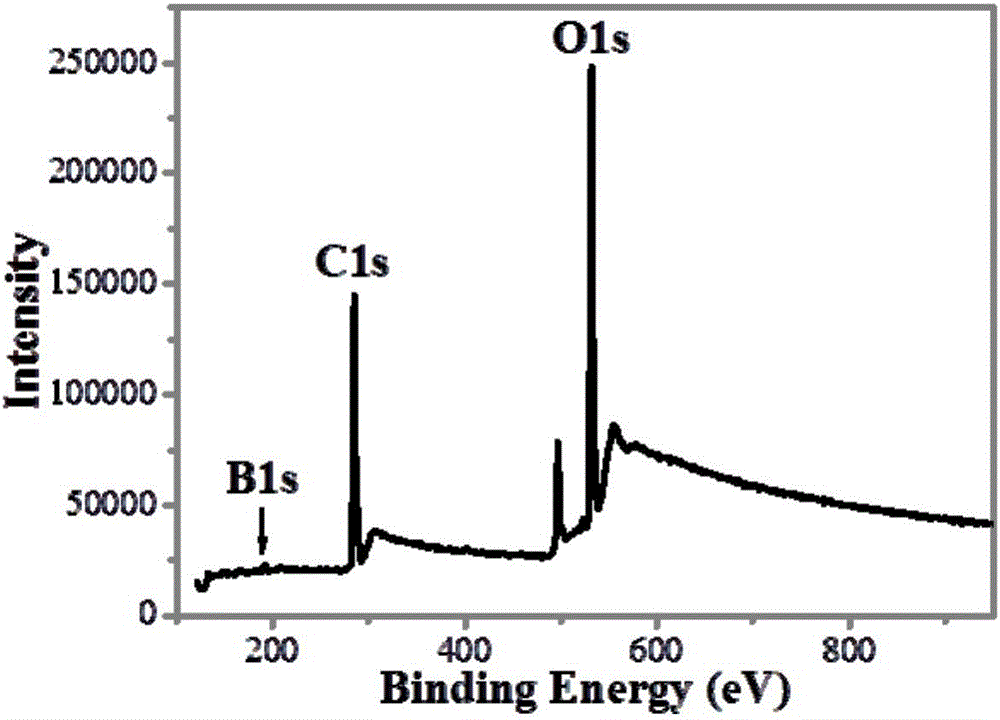Boron-doped carbon-base fluorescent nano material, and preparation method and application thereof
A fluorescent nanomaterial and nanomaterial technology, which is applied in the field of low-concentration detection of lead ions and copper ions in water, can solve the problems affecting the selectivity and sensitivity of metal ion detection, low product quantum yield, and poor selectivity. Achieve excellent selectivity, increase the content of dopant atoms, and reduce the detection limit
- Summary
- Abstract
- Description
- Claims
- Application Information
AI Technical Summary
Problems solved by technology
Method used
Image
Examples
Embodiment Construction
[0019] The present invention will be further described below in conjunction with the accompanying drawings and specific embodiments, but the present invention is not limited thereto.
[0020] (1) Preparation of B-Cdots fluorescent nanomaterials by hydrothermal method: Weigh 1.1 g ascorbic acid and 0.5 g boric acid into a 100 mL beaker, then add 25 mL water and 25 mL ethanol successively, sonicate at room temperature for 30 min, and then use 1 M NaOH was used to adjust the pH to 10.0, and finally the obtained precursor solution was evenly distributed into a polytetrafluoroethylene high-temperature reactor, reacted at 180 °C for 9.0 h, and then naturally cooled to room temperature. The obtained black-brown solution was placed in the refrigerator for 5 days to remove some large-volume particulate matter, and finally the product was centrifuged at a speed of 9,000-10,000 rpm for 20 minutes to obtain B with excellent fluorescence properties. -Cdots fluorescent nanomaterials, the da...
PUM
 Login to View More
Login to View More Abstract
Description
Claims
Application Information
 Login to View More
Login to View More - R&D
- Intellectual Property
- Life Sciences
- Materials
- Tech Scout
- Unparalleled Data Quality
- Higher Quality Content
- 60% Fewer Hallucinations
Browse by: Latest US Patents, China's latest patents, Technical Efficacy Thesaurus, Application Domain, Technology Topic, Popular Technical Reports.
© 2025 PatSnap. All rights reserved.Legal|Privacy policy|Modern Slavery Act Transparency Statement|Sitemap|About US| Contact US: help@patsnap.com



